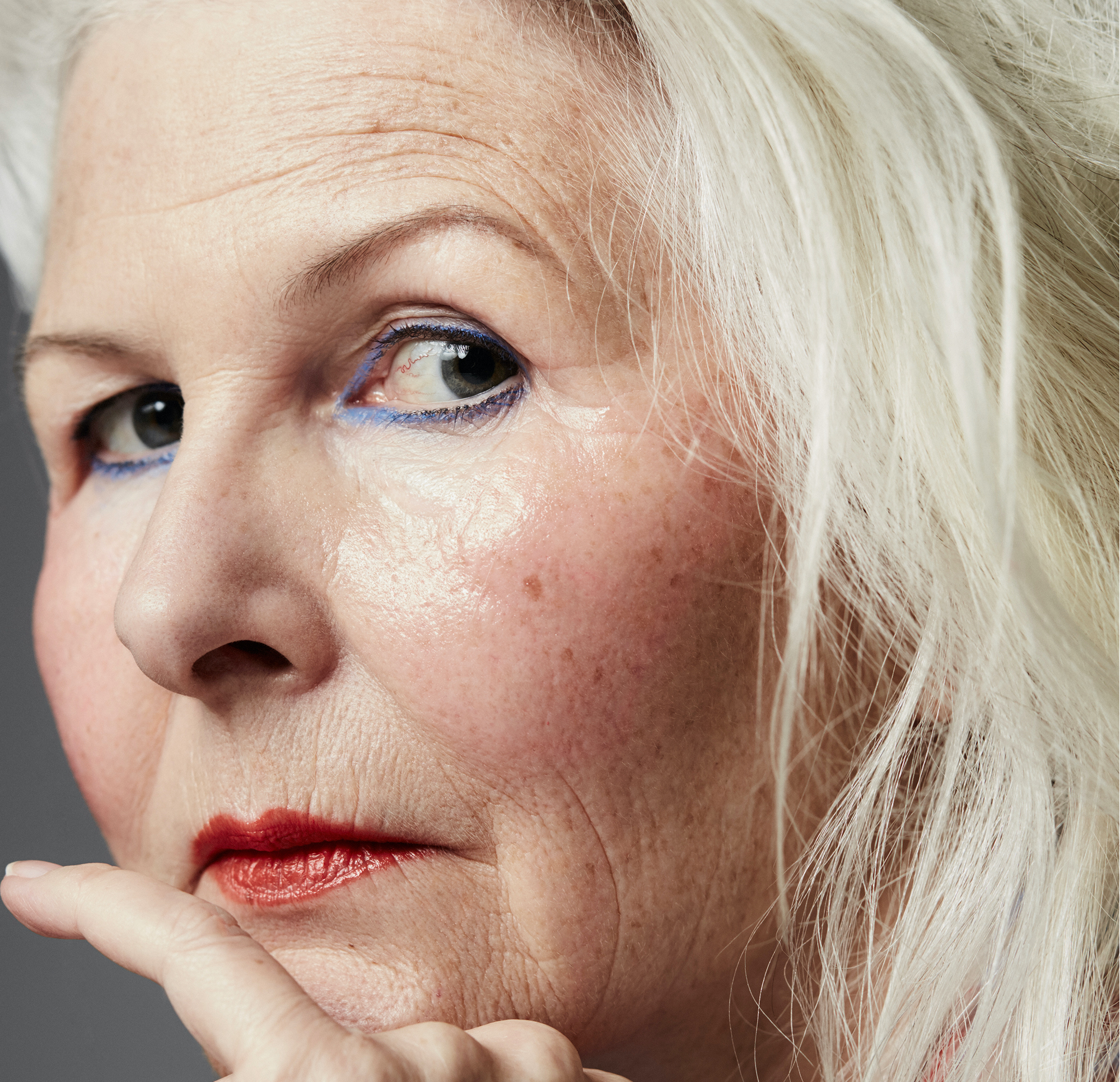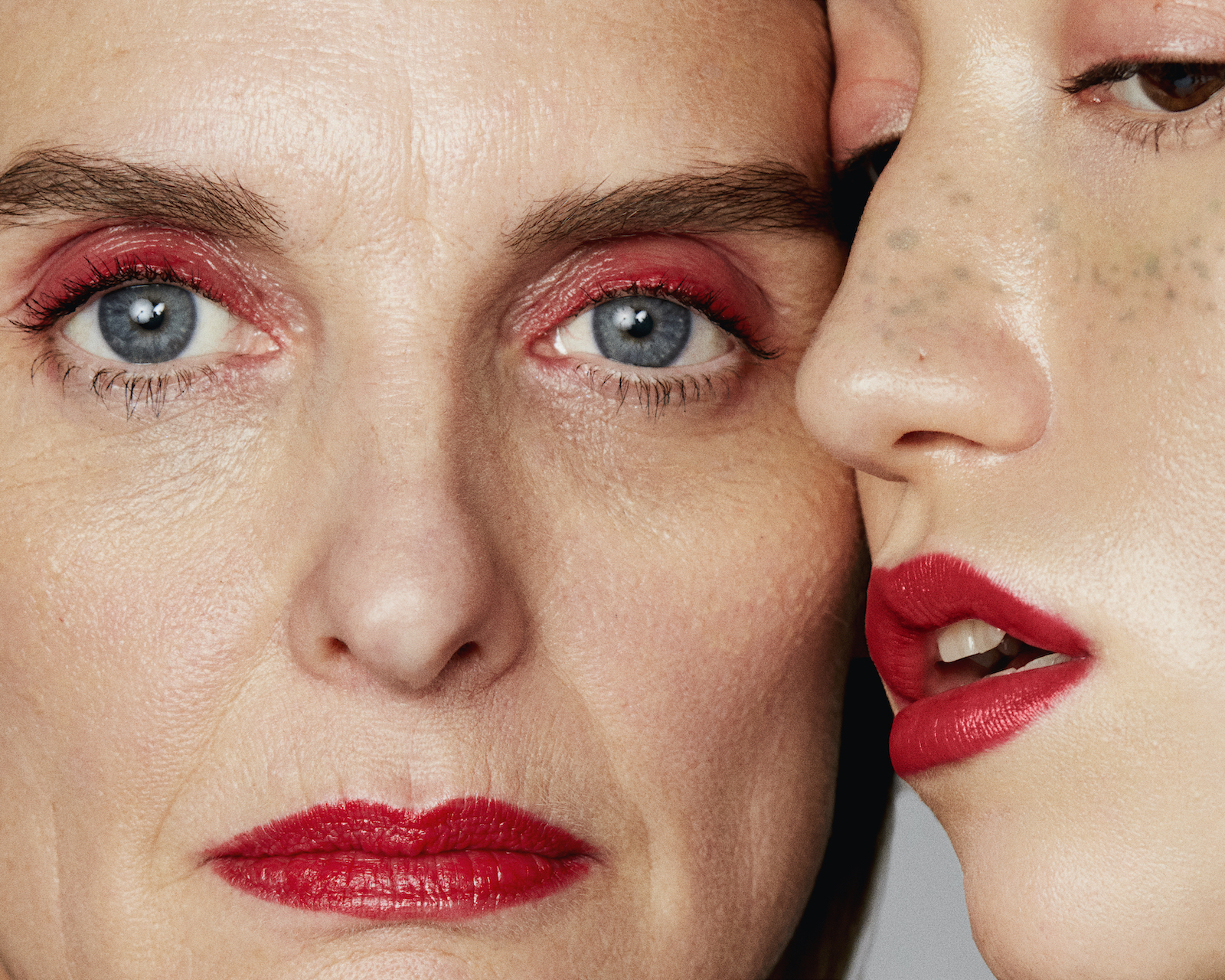This year, the World Health Organization declared the Decade of Healthy Aging, kicking it off with a global campaign to combat ageism. Why not start with the beauty industry?
The global market for anti-aging products was around $58 billion (U.S.) last year. That means millions of people—mostly women—are spending money to solve a “problem” that is actually just part of being human: getting older. “It’s really a lot about making money off insecurities,” says Camille Katona, co-founder of 19/99 Beauty, a colour cosmetics brand designed for everyone, regardless of age. “The way things are being marketed doesn’t sit well.”
However, there is a movement for change. “From a social perspective, we’re becoming more aware of age discrimination and ageist ideas,” says Dr. Candace Konnert, a professor in the psychology department of the University of Calgary. “Also, there’s a cohort effect. For boomers who grew up with the feminist movement, the anti-aging ideal is just not cutting it. And the discourse is changing, too. An anti-aging message goes against the idea of celebrating diversity.” She says the reasons we equate youth and beauty and that we discriminate against older people are complex. “There could be many explanations that range from evolutionary-biological to social-cultural,” she says. “It’s basically another variant of the nature-nurture debate. Like all other debates of this nature, these things interact and have deep cultural variations.”
Katona and her co-founder, Stephanie Spence, established 19/99 (the products are for those aged 19 to 99) in 2020. Spence is 33, Katona is 29, and both want to change the conversation around aging for current and future generations. “The change is too slow,” Katona says. “A lot of brands and marketing are speaking to aging women in a way that doesn’t really reflect how they live their lives.”
Spence continues. “People are aging differently—staying connected to culture and trends and each other in a way that perhaps you didn’t 10 or 15 years ago.”
The duo decided to focus on colour cosmetics—eye and lip pencils, lip gloss, and mascara that are multipurpose so you can play with them and use them how you want. “We wanted to create a tool kit that lets people do more with less,” Katona explains. “The products are versatile and unprescribed, which allows users to define beauty on their own terms. It’s about using your face and having fun.”
Colour cosmetics are about self-expression, not correction, unlike skin-care or aesthetic procedures, where brands and practitioners are struggling to stop using the term anti-aging. Some have landed on terms like pro-aging, skin wellness and healthy skin. “In our clinic, we don’t use the term anti-aging. It sounds unnatural because aging is a natural process, and there’s nothing wrong with that,” says Dr. Amanda Lau, medical director of Skinfolio in West Vancouver. “What we’re finding is that this clientele is pro-aging. They have no problem saying they’re 65, 75, 95. They just want to look like a fresher version of themselves.” Dr. Lau also talks about beauty in terms of achieving and maintaining skin health, rather than anti-aging. “That concept matches with our clientele, who are more into self-care and wellness,” she explains.

What does healthy skin look like, and what does it need to be healthy? As a baseline, it must be hydrated to feel comfortable, and skin tends to get drier with age, which might require a moisturizer. Sensitivity can also increase with age, which might call for products that can strengthen the skin and make it more resilient. And everyone needs sunscreen to prevent UV damage that can cause skin cancer. So far, so uncontroversial.
Pro-aging tends to use hazier language bound up in cultural messaging and emotions. If your face sags, you might seem grumpy. If you have eye bags, or your skin cell turnover has slowed with age, you may appear tired, or your skin may be less glowing than when you were young. Dr. Lau points out that if you get “11” lines in your forehead, you can look like you’re frowning. “When I ask patients why they are [at the clinic for Botox], they say they identified something they didn’t like and wanted to change it, for themselves. ‘When I look in the mirror, I look angry, and that’s not how I feel inside.’ They want things to match.” The procedures might do some of the same things as previous anti-aging ones, but the intent and approach are different. “We let clients dictate the process. I start by giving them a mirror and asking them to tell me what bothers them. I remind them that we’re our own harshest critics, and I ask what emotions they are expressing that they would like us to change.”
Her clients are also savvy about the products they choose. A favourite of Dr. Lau’s is SkinCeuticals, which does use the term anti-aging, but, she says, not quite the same way as other brands. “It has been very conscious of not being a brand that believes age is a demon we are fighting,” she explains. “It’s about having a scientific approach and educating customers about what a product is really for.” It’s aligned with the educational and consultative approach most doctors also take around aesthetic procedures. For SkinCeuticals, that means analyzing ingredients and what factors damage skin, explaining details with nuance: for example, melanin can have a protective effect on skin even if it makes dark spots and freckles appear. It means being truthful about what a product might actually be able to achieve, supported by data. And it means using a diverse range of models and brand spokespeople who represent different ways of being beautiful.
Spence, a 33-year-old, says that around 75 per cent of her peers have had some aesthetic work. “I’m a big believer in doing what you want. I’m not here to judge what you do with your face—your body, your choice—it’s great if it makes you feel good,” she says. “But be thoughtful about where your choices are coming from.”
Dr. Konnert says social comparison is a huge factor in how people feel about their appearance, related to age and in general. “If you’re constantly involved in comparing the way you look with other people, in your life or in the media, you will probably have lower psychological well-being,” she says. “There’s emerging research that the amount of time we spend looking online can increase the amount of social comparison and lead to you seeing yourself as less attractive. She welcomes the trend toward more diversity in advertising. “If you extend that to better representation of older people in the media—not just the Helen Mirrens and Jane Fondas—certainly that would be one way of addressing the issue.”
Of course, if we want to get rid of the term anti-aging, we need to vote with our dollars. “In some ways, the consumers are telling brands [anti-aging] is what they want. If you look at keyword searches and online advertising, that’s what sells their products,” Spence says. “Until consumers are wanting and demanding something different with their dollars, from a purely capitalistic perspective it’s hard for brands to rally against something that will rake in sales.” To her point, it’s almost impossible to find skin-care brands that don’t allude to anti-aging either explicitly or implicitly—if they aren’t talking about defeating aging, they’re still talking about getting rid of wrinkles.
Dr. Konnert feels optimistic about how younger women will fight to change the industry. And Spence and Katona are optimistic for themselves. “My twenties were not a picnic, and I’m pretty happy to be aging,” Spence says. “I think things are changing, and I feel like I’m more interesting as I get older—having more experiences, becoming more curious.” Katona agrees. “Aging has never been a huge concern of mine apart from being angry at the messaging out there,” she says. “Feeling a sense of ownership over how I’m going to age is freeing. Not all parts are fun, and I’m aware of that, but I’m not afraid.”
Photos courtesy of 19/99. Read more beauty stories.









